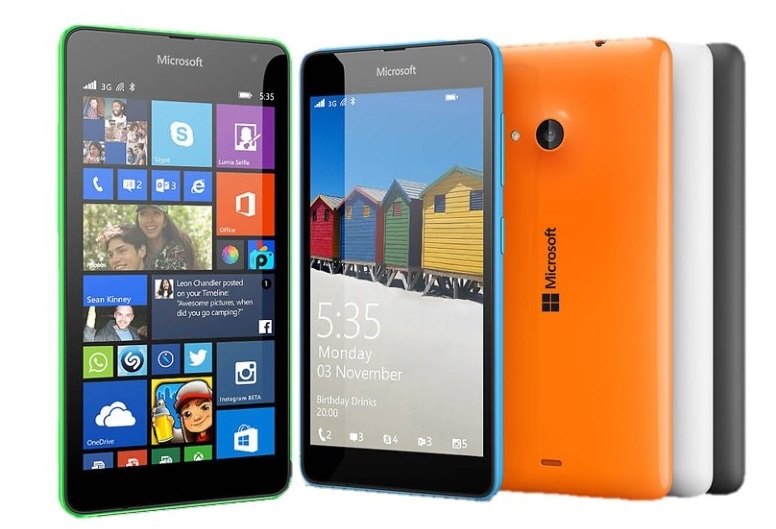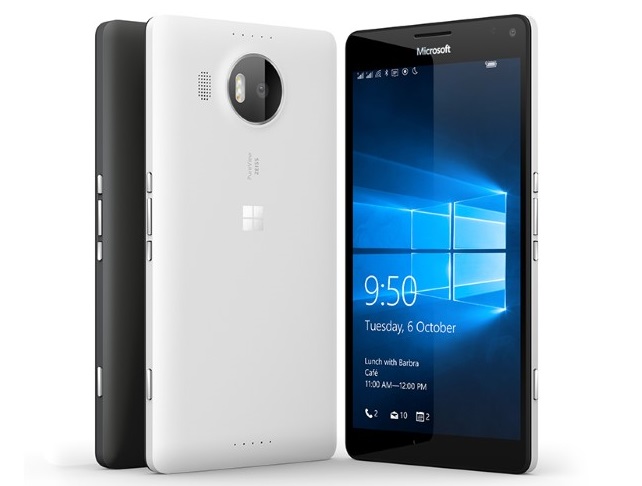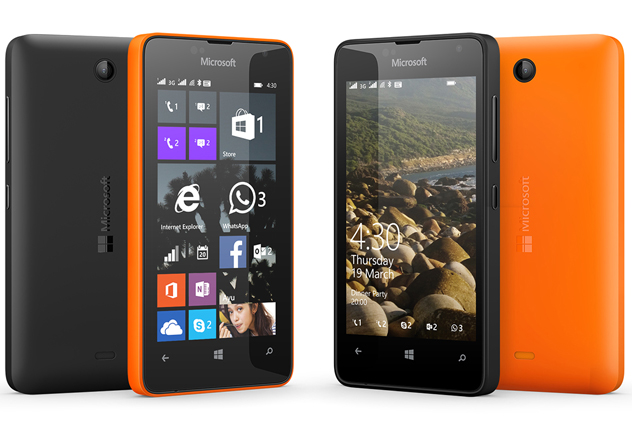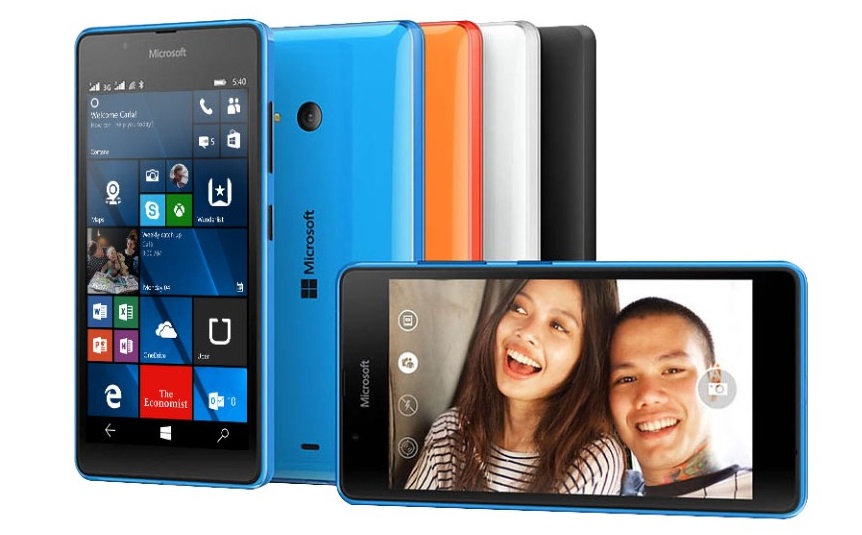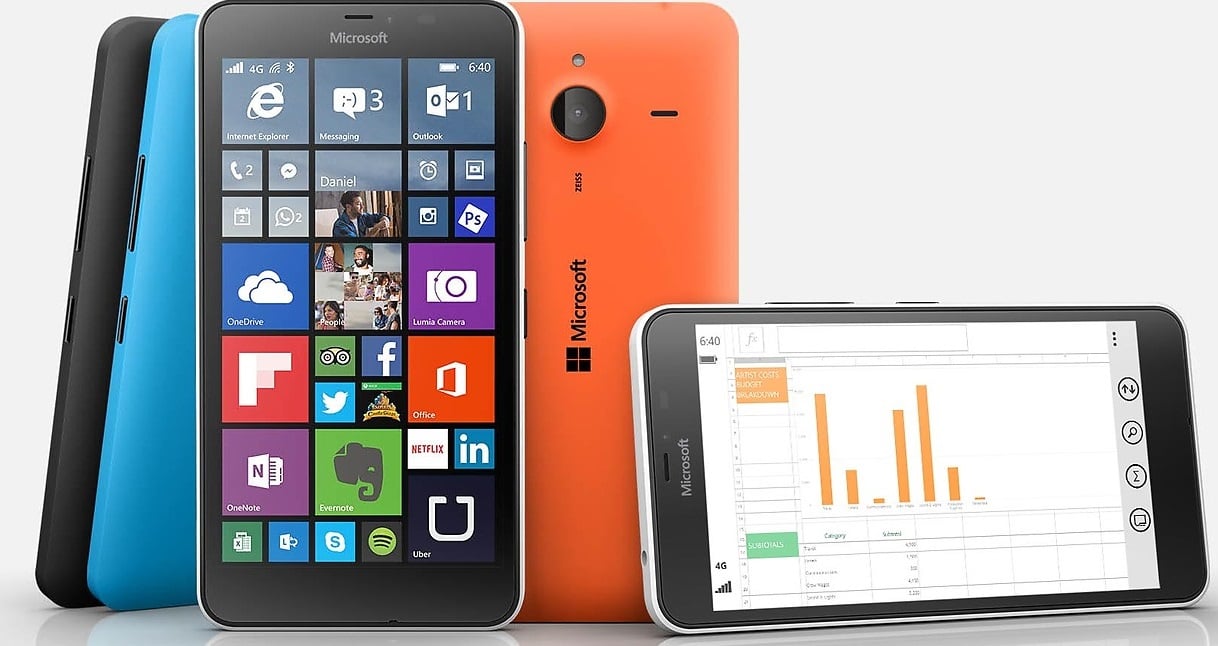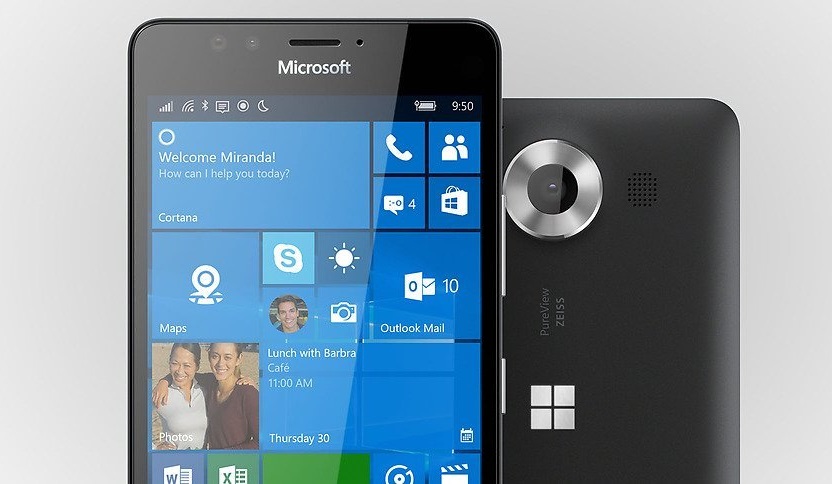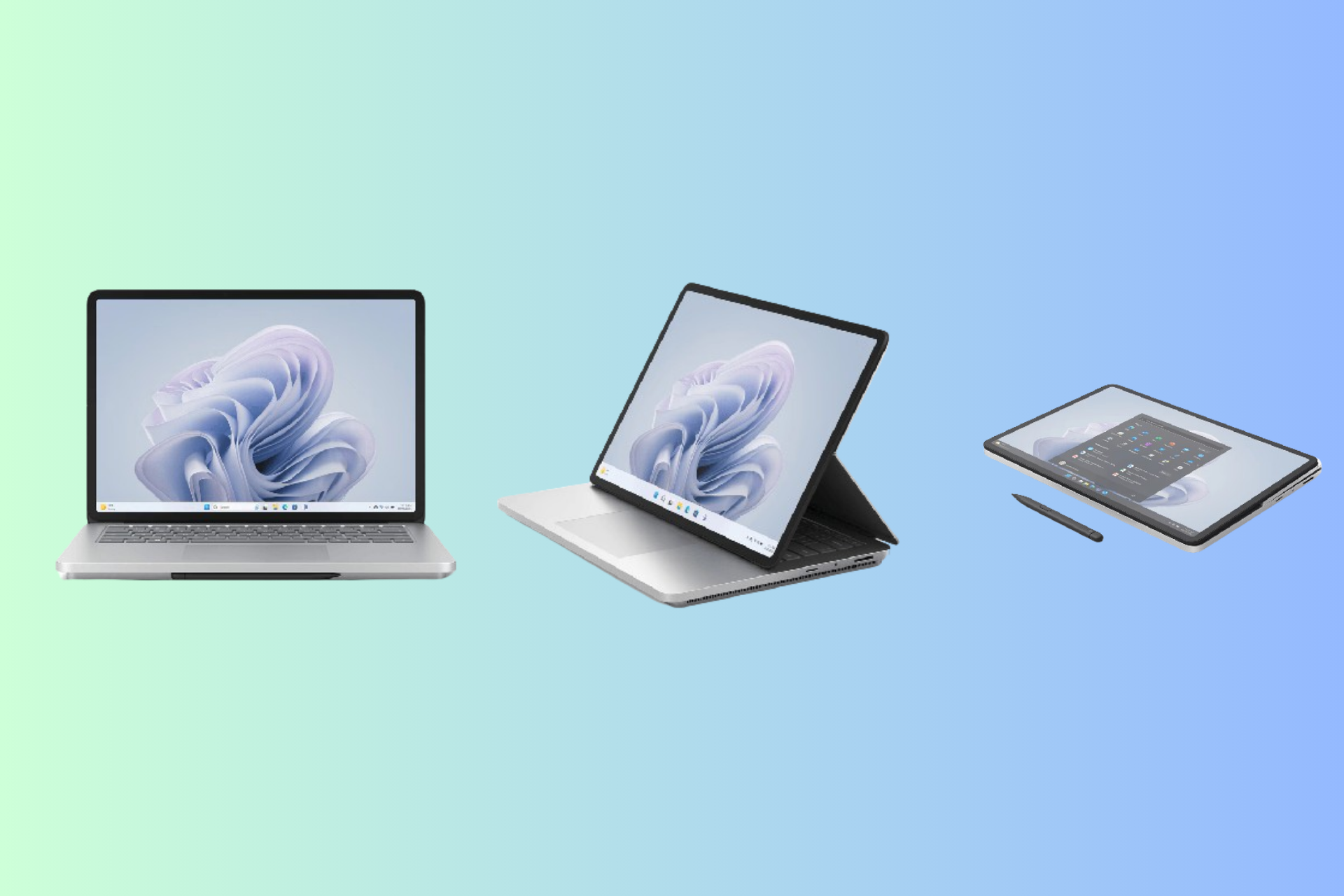5+ best dual SIM Windows phones
5 min. read
Updated on
Read our disclosure page to find out how can you help Windows Report sustain the editorial team Read more

Are you a Windows user interested in a Windows phone with intriguing features? Today, we are going to show you some of the best dual SIM Windows phones.
Dual SIM mobile phones enable you to use two SIM cards on your phone. However, Windows Report has compiled this list for you.
What are the best dual SIM Windows phones?
Microsoft Lumia 535 Dual SIM
This smartphone was launched in November 2014. It comes with a 5.00-inch touchscreen display and a resolution of 540 pixels by 960 pixels with a 220 pixels per inch PPI.
The device is powered by a 1.2GHz quad-core Qualcomm Snapdragon 200 processor.
It has 1GB of RAM, 8GB of internal storage, a 5-megapixel primary camera and a 5-megapixel at the front suitable for selfies.
It runs on Windows 8.1 and has a 1905mAh removable battery.
The Microsoft Lumia 535 Dual SIM accepts Micro-SIMs. Connectivity options include GPS, Wi-Fi, FM Bluetooth and 3G. Sensors include Accelerometer, Proximity sensor and Ambient light sensor.
Buy the Lumia 535 Dual SIM from the Microsoft Store.
- ALSO READ: Check out the Mirabook laptop powered by Windows Phone
Microsoft Lumia 950 XL Dual SIM
This smartphone was launched in October 2015. It comes with a 5.70-inch touch screen display and a resolution of 1440 pixels by 2560 pixels with 518 pixels per inch PPI.
Octa-core Qualcomm Snapdragon 810 processor powers the Microsoft Lumia 950 XL Dual SIM and it comes with 3GB of RAM. It has 32GB of internal storage, a 20-megapixel primary camera and a 5-megapixel at the front suitable for selfies.
It runs on Windows 10 Mobile and has a 3340mAh removable battery. The phone consists of sensors such as Proximity sensor, Compass Magnetometer, Ambient light sensor, Accelerometer, Gyroscope and Barometer.
Buy the Lumia 950 XL Dual SIM from the Microsoft Store.
Microsoft Lumia 430 Dual SIM
It was launched in March 2015. It comes with a 4.00-inch touchscreen display and a resolution of 480 pixels by 800 pixels with 235 pixels per inch PPI.
1.2GHz dual-core Qualcomm Snapdragon 200 processor powers it. This smartphone comes with 1GB of RAM. It has 8GB of internal storage, 2-megapixel primary camera and a 0.3-megapixel at the front suitable for selfies. It runs on Windows Phone 8.1 and has a 1500mAh removable battery.
Microsoft Lumia 430 Dual SIM accepts Micro-SIMs.
Connectivity options consist of GPS, Wi-Fi, FM, Bluetooth and 3G. Sensors include Accelerometer, Proximity sensor, gyroscope and Ambient light sensor.
Microsoft Lumia 540 Dual SIM
This smartphone comes with a 5.00-inch touchscreen display and a resolution of 720 pixels by 1280 pixels with a 294 pixels per inch PPI. 1.2GHz quad-core Qualcomm Snapdragon 200 processor Powers it.
It comes with 1GB of RAM, 8GB of internal storage, a 8-megapixel primary camera and a 5-megapixel at the front suitable for selfies.
It runs on Windows Phone 8.1 and has a 2200mAh removable battery.
The Microsoft Lumia 540 Dual SIM accepts Micro-SIMs. Connectivity options include GPS, Wi-Fi, FM Bluetooth and 3G.
Sensors on the phone include Proximity sensor, Accelerometer, Compass Magnetometer and Ambient light sensor.
Microsoft Lumia 640 XL LTE Dual SIM
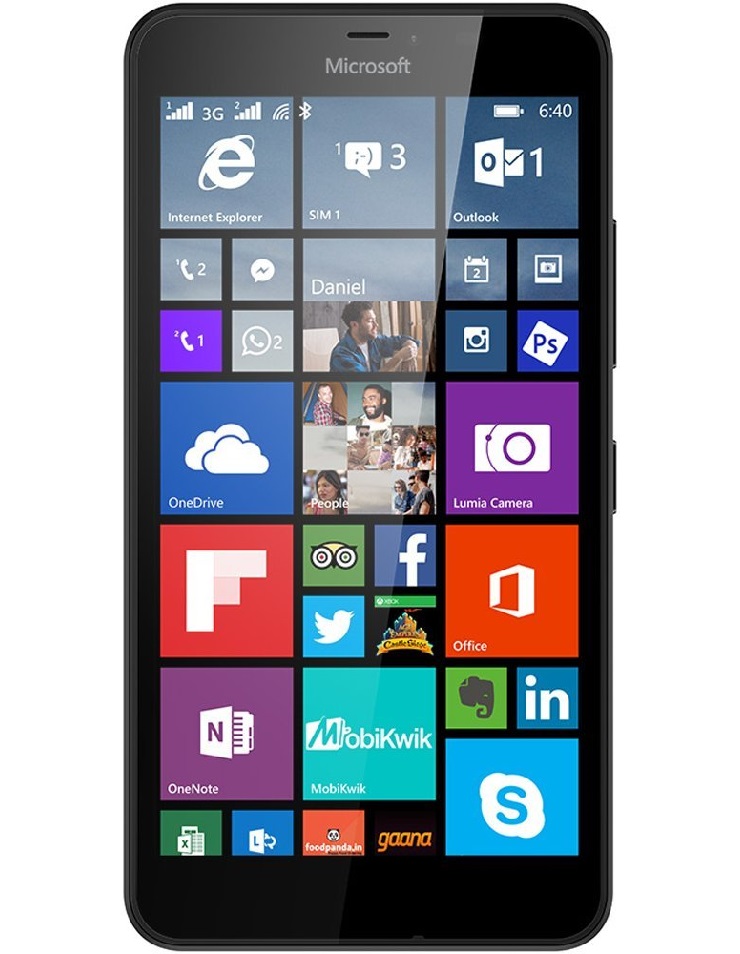
This smartphone was launched in March 2015. It comes with a 5.70-inch touchscreen display and a resolution of 720 pixels by 1280 pixels with a 259 pixels per inch PPI. 1.2GHz quad-core Qualcomm Snapdragon 400 processor powers it.
This smartphone comes with 1GB of RAM. It has 8GB of internal storage, a 13-megapixel primary camera and a 5-megapixel at the front suitable for selfies.
It runs on Windows Phone 8.1 and has a 3120mAh removable battery.
Microsoft Lumia 640 XL LTE Dual SIM accepts Micro-SIMs. Connectivity options include GPS, Wi-Fi, NFC, Bluetooth, FM, 3G and 4G. Sensors include Proximity sensor, Accelerometer, Compass Magnetometer and Ambient light sensor.
Buy the Lumia 640 XL from Amazon.
- ALSO READ: Lumia 640 XL finally gets Windows 10 Mobile
Microsoft Lumia 532 Dual SIM
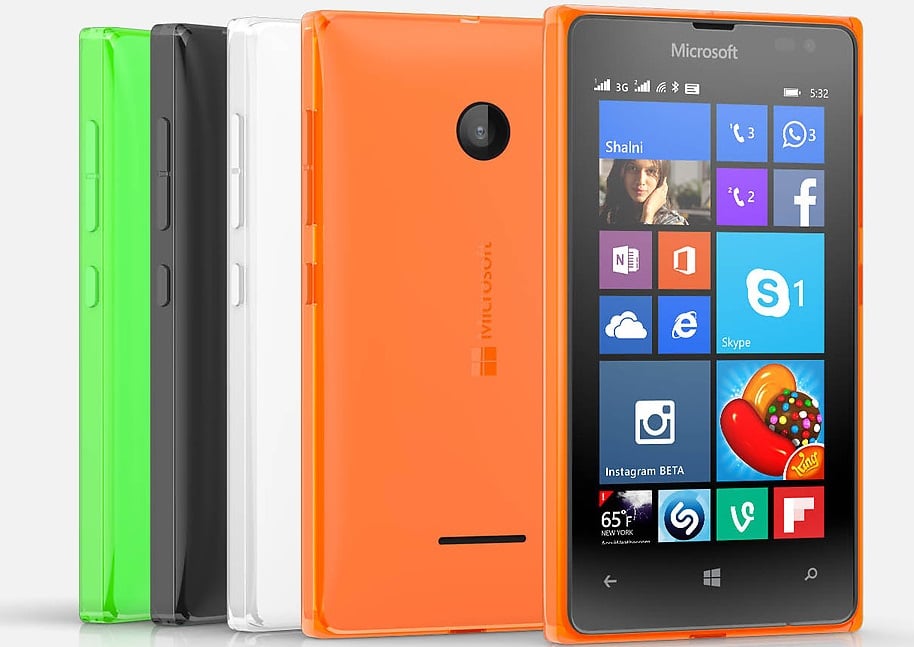
This smartphone was launched in February 2015. It comes with a 4.00-inch touchscreen display and a resolution of 480 pixels by 800 pixels with a 233 pixels per inch PPI. 1.2GHz quad-core Qualcomm
Microsoft Lumia 532 Dual SIM comes with 1GB of RAM, 8GB of internal storage, 5-megapixel primary camera and a 0.3-megapixel at the front suitable for selfies.
It runs on Windows Phone 8.1 and has a 1560mAh removable battery. It accepts Micro-SIMs. Connectivity options include GPS, Wi-Fi, FM, Bluetooth and 3G. Sensors include Accelerometer, Proximity sensor and Ambient light sensor.
Microsoft Lumia 640 XL Dual SIM
This smartphone was launched in March 2015. It comes with a 5.70-inch touchscreen display and a resolution of 720 pixels by 1280 pixels with a 259 pixels per inch PPI. 1.2Gz quad-core Qualcomm Snapdragon 400 processor powers it and it comes with 1GB of RAM. It has 8GB of internal storage, a 13-megapixel primary camera and a 5-megapixel at the front suitable for selfies.
It runs on Windows Phone 8.1 and has a 3000mAh removable battery. Microsoft Lumia 640 XL Dual SIM accepts Micro-SIMs.
Connectivity options include GPS, Wi-Fi, NFC, Bluetooth, FM and 3G. Sensors include Proximity sensor, Compass Magnetometer, Ambient light sensor and Accelerometer.
Buy the phone from Amazon.
Microsoft Lumia 950 Dual SIM
This smartphone was launched in October 2015. It comes with a 5.20-inch touch screen display and a resolution of 1440 pixels by 2560 pixels with 564 pixels per inch PPI.
1.8GHz hexa-core Qualcomm Snapdragon 808 processor powers it. This smartphone comes with 3GB of RAM. This phone has 32GB of internal storage, a 20-megapixel primary camera and a 5-megapixel at the front suitable for selfies.
However, it runs on Windows 10 Mobile. Microsoft Lumia 950 has a 3000mAh removable battery. In addition, it accepts Nano-SIMs.
Connectivity options consist of GPS, Wi-Fi, Bluetooth, FM, NFC, 3G and 4G. Sensors consist of Proximity sensor, Accelerometer, Compass Magnetometer, Gyroscope, Ambient light sensor and Barometer.
Do share with us your experience in using any of these dual sim Windows phones.

